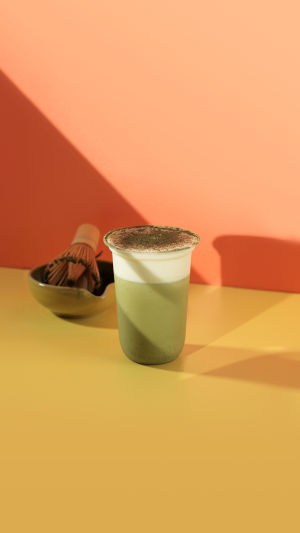<b>A friendly hello to all our Lykkers!</b> If you've ever felt overwhelmed by the variety of matcha options on the market, you're not alone. From vibrant green powders to dull and dusty versions, it can be hard to tell what’s worth buying and what isn’t.
This guide was made just for you—to help understand the key differences in matcha types, what truly affects quality and price, and how to confidently choose the best product for your needs. Let’s clear things up so you can enjoy matcha the way it was meant to be!
<h3>Understanding the Price Gaps in Matcha</h3>
<b>Why is there such a wide price range?</b> Matcha can cost anywhere from a few cents to several euros per gram. These differences come down to four key factors: where the tea is grown, how it is cultivated, how it is harvested, and how it is processed.
<b>Origin and Cultivation</b>
The finest matcha is grown in Japan, where generations of experience and traditional techniques come together. These farms focus on cultivating rich, flavorful leaves under shaded conditions, a process that enhances taste and nutrients.
On the other hand, many cheaper options are grown in areas with less attention to such detail. These often prioritize quantity over quality and may skip important shading periods, resulting in flatter taste and a less vibrant appearance.
<b>Harvest and Processing</b>
High-quality Japanese matcha is picked by hand and ground slowly using granite stone mills. This protects its freshness and texture, creating a powder that is smooth and full of aroma.
Mass-produced versions are usually machine-harvested, often including tougher parts of the plant. These are then ground with high-speed machinery, causing heat that can alter color, flavor, and texture. As a result, the powder might appear yellowish or brownish, taste bitter, and feel gritty.
<h3>Recognizing Real Quality</h3>
<b>How to know if your matcha is worth it</b>
Forget the fancy labels. Terms like “premium” or “ceremonial” are often used loosely and don’t guarantee real quality. Instead, trust your senses—look, smell, taste, and feel.
<b>Color and Texture</b>
A good matcha has a bright green to jade hue and a silky consistency. When whisked, it creates a smooth, rich foam. Lower quality matcha might be dull in color and coarse in texture, creating a sandy or watery experience in the mouth.
<b>Smell and Taste</b>
Top-tier matcha offers a balanced, mellow taste with floral and nutty hints. Its aroma is fresh and slightly sweet. Lower grades can smell musty or grassy and taste harsh or sour.
<b>Choosing by Use</b>
If you’re preparing a thick, concentrated matcha experience or enjoying a mindful tea moment, go for higher-quality powders (typically above €1 per gram). If you're using matcha for daily beverages, smoothies, or even baking, a mid-range product (around €0.60–€1 per gram) may suit you better. More intense-flavored and budget-friendly types can work well in recipes without compromising too much on taste.
<h3>Certified or Not? The Truth About Labels</h3>
<b>Is certified organic matcha always better?</b>
Certification can provide peace of mind, especially for matcha sourced from countries with looser regulations. For example, when buying from producers outside of Japan, look for organic seals to ensure the product is free from harmful substances.
<b>The Japanese Standard</b>
Producers in Japan already follow strict farming and safety rules. Whether or not the matcha is officially certified, Japanese matcha generally meets high standards of cleanliness and environmental care. Certification here is more about how fertilizers are used rather than a guarantee of higher safety.
<b>Outside Sourcing</b>
When looking at products from other countries, certification becomes more important. Not all producers follow the same safety measures, so choosing labeled products helps avoid unwanted substances.
<h3>Where to Shop for Good Matcha</h3>
<b>Supermarkets vs. Specialized Sellers</b>
Matcha can now be found almost everywhere—from supermarkets to online platforms. While low prices can be tempting, these options often provide little information about the tea’s background. Without knowing how and where it was produced, it’s hard to judge its true value.
<b>What to Look For</b>
Choose vendors who clearly explain the tea’s origin, cultivation, and processing. A trustworthy seller will offer transparency and fair pricing. Avoid vague marketing terms and seek matcha that reflects care and craftsmanship, even if it comes at a slightly higher price.
<h3>Conclusion: Find the Matcha That Matches You</h3>
Lykkers, choosing the right matcha doesn’t have to be complicated. By focusing on the key elements—origin, cultivation, processing, and sensory signs—you can confidently select a product that fits your taste and purpose. Whether you're looking for a luxurious tea experience or an everyday boost for recipes, there’s a matcha for you. Just remember, quality has a story behind it, and now you know how to read it. Happy sipping!





